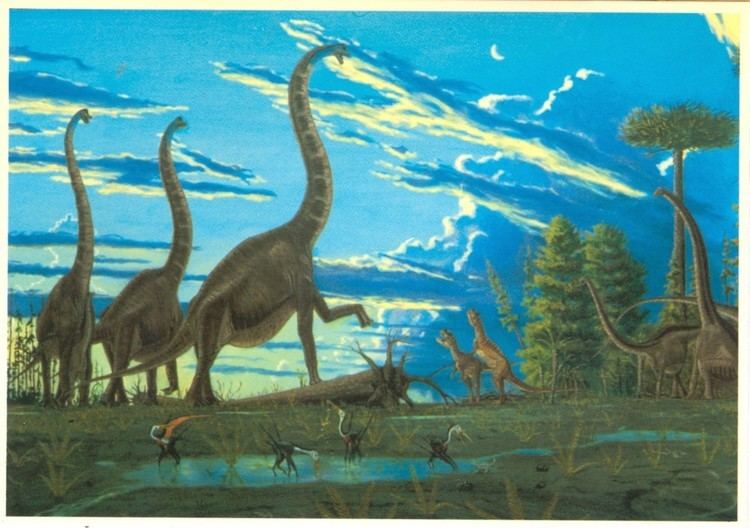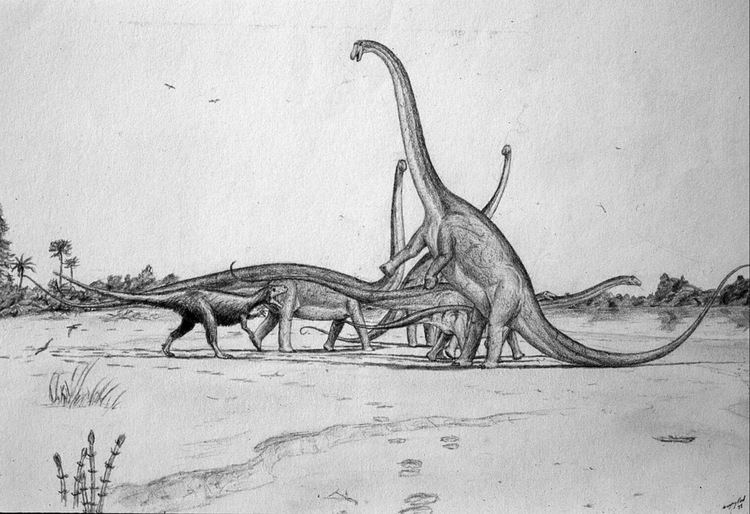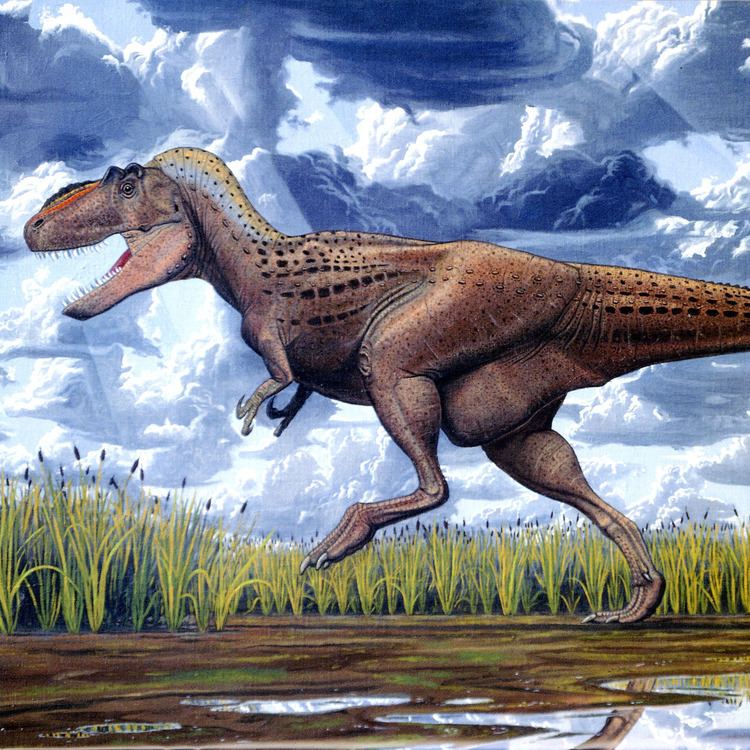Nationality American Institutions Independent | Name Gregory Paul Role Author | |
 | ||
Born December 24, 1954 (age 71) Washington DC ( 1954-12-24 ) Known for Accurate dinosaur restorationsPioneering feathered theropods during "Dinosaur Renaissance"Technical/popular books and articles, criticism of religion Influenced Artists during and after the "Dinosaur Renaissance" Books The Princeton Field Gui, Predatory dinosaurs of the world, Dinosaurs of the Air, Beyond Humanity: CyberEvo | ||
Gregory S. Paul
Gregory Scott Paul (born December 24, 1954) is an American freelance researcher, author and illustrator who works in paleontology, and more recently has examined sociology and theology. He is best known for his work and research on theropod dinosaurs and his detailed illustrations, both live and skeletal. Professionally investigating and restoring dinosaurs for three decades, Paul received an on-screen credit as dinosaur specialist on Jurassic Park and Discovery Channel's When Dinosaurs Roamed America and Dinosaur Planet. He is the author and illustrator of Predatory Dinosaurs of the World (1988), The Complete Illustrated Guide to Dinosaur Skeletons (1996), Dinosaurs of the Air (2001), The Princeton Field Guide To Dinosaurs (2010), Gregory S. Paul's Dinosaur Coffee Table Book (2010), and editor of The Scientific American Book of Dinosaurs (2000).
Contents

Paul's recent research on the interactions of religion and society has received international press and media coverage.

Illustrations

Paul helped pioneer the "new look" of dinosaurs in the 1970s. Through a series of dynamic ink drawings and oil paintings he was among the first professional artists to depict them as active, warm-blooded and – in the case of the small ones – feathered. Many later dinosaur illustrations are a reflection of his anatomical insights or even a direct imitation of his style. The fact that he worked closely with paleontologists, did his own independent paleontological research and created a series of skeletal restorations of all sufficiently known dinosaurs, lead many to regard his images as a sort of scientific standard to be followed. This tendency is stimulated by his habit of constantly redrawing older work to let it reflect the latest finds and theories. Much of it is in black-and-white, in ink or colored pencil. Sculptors have used these anatomical templates as a resource for decades, and still do today many unauthorized and uncredited Even one of his scientific critics, Storrs L. Olson, described him in a review in the Scientific American as "a superior artist". He was inspired by classic paleoartists such as Charles R. Knight, and has a fondness for the dinosaur restorations of the little-known artist Bill Berry.

Paul's line art and paintings have been published in over 100 popular books and shown in more documentaries than other modern paleoartists including several television programs such as The Nature of Things, NOVA, Horizon, and PaleoWorld. Among the magazines his art has appeared in are: Time, Smithsonian, Discover, Scientific American, Equinox and Natural History.
Research

From 1977 to 1984, Paul was an informal research associate and illustrator for Robert Bakker in the Earth and Planetary Sciences department at Johns Hopkins University in Baltimore. Paul lacks a formal degree in paleontology, but has participated in numerous field expeditions and has authored or co-authored over 30 scientific papers and over 40 popular science articles. Paul proposed that some of the bird-like feathered theropods were winged fliers, and that others were secondarily flightless, an idea supported by some fossils from China. Paul proposed the controversial thermoregulatory concept of "terramegathermy", which argues that only animals with high basal metabolic rates can exceed one tonne on land. Paul has named the following dinosaurs, alone or with co-authors:
The first three of these are now commonly assigned to other taxa. The theropod Cryptovolans pauli(now Microraptor) is named after him in recognition of his (presumed correct) predictions about feathered and flying dinosaurs. Sellacoxa pauli is named after him to recognize his recent work in iguanodont research.
Paul's designs of the great pterosaur Quetzalcoatlus northropi were instrumental in building AeroVironment's half-scale robot star of the 1986 IMAX movie On the Wing.
Writing
Aside from many scientific articles, Paul has written four books on paleontology, all illustrated by the author:
Paul was also editor of The Scientific American Book of Dinosaurs (2000).
Religion
Because creationists claim that popular acceptance of evolution harms societies, and because the sociology of religion's cultural impact is under-researched, Paul began to investigate what he labels the "moral-creator socioeconomic hypothesis." Paul authored a paper in 2005 wherein, he states in the introduction that the paper is "not an attempt to present a definitive study that establishes cause versus effect between religiosity, secularism and societal health". He concludes that less religious first world societies generally have low social dysfunction. However, many important and unresolved problems were noted by other researchers on his methodology such as lack of clarity in his definitions and concepts of "religion" and "secular", too much reliance on scatter plots instead of multivariate and multiple regression analysis which single out variables from complex phenomena to better source the probable causes of any correlations, and not indicating the limits of his sources of data in such as the diverse linguistical understanding of "religion" in all cultures in the data used.
In a follow-up paper in 2009 he notes "high religiosity is not universal to human populations, and it is actually inversely related to a wide range of socio-economic indicators representing the health of modern democracies." Paul holds that, "once a nation's population becomes prosperous and secure, for example through economic security and universal health care, much of the population loses interest in seeking the aid and protection of supernatural entities. This effect appears to be so consistent that it may prevent nations from being highly religious while enjoying good internal socioeconomic conditions."
These conclusions are in line with other sociological research such as Pippa Norris and Ronald Ingelhart's Sacred and Secular (2004) and Phil Zuckerman's Society Without God (2009). His research is not in line with works from John Micklethwait and Adrian Woodbridge, or research from Peter L. Berger (2009) and Philip Jenkins. These latter works argue that the resurgence of religion in diverse and previously secular nations such as India, Singapore, China and Turkey, which has primarily been among the more educated, economic upper-class, when viewed alongside the continued religious adherence in the United States, seems to paint Europe (the primary center of Paul and Zuckerman's arguments) as the exception instead of the norm.
Paul's paper goes on to conclude that religion is not universal, that there is no well developed God gene, and that humans are much more adapted to be materialists than spiritual. The study was covered by the senior science editor at Newsweek who observed that the "brain may indeed be predisposed to supernatural beliefs. But that predisposition may need environmental input to be fully realized." An article in USA Today presents contrasting views on Paul's conclusions.
In Philosophy and Theology Paul published a paper that cites the large scale deaths of children as evidence against the existence of a good God. The paper concludes that the widely held free will and best of all possible worlds theological hypotheses are not correct. The absence of a moral creator is cited in the Evolutionary Psychology paper as one reason why religiosity would not lead to superior societal conditions.
In a discussion in Science, Paul observes that "Prosperous modernity is proving to be the nemesis of religion". The same piece also claims that the lack of religion in some hunter-gatherers refutes the God gene hypothesis, in which a propensity to religion is genetically hard wired into the human brain.
